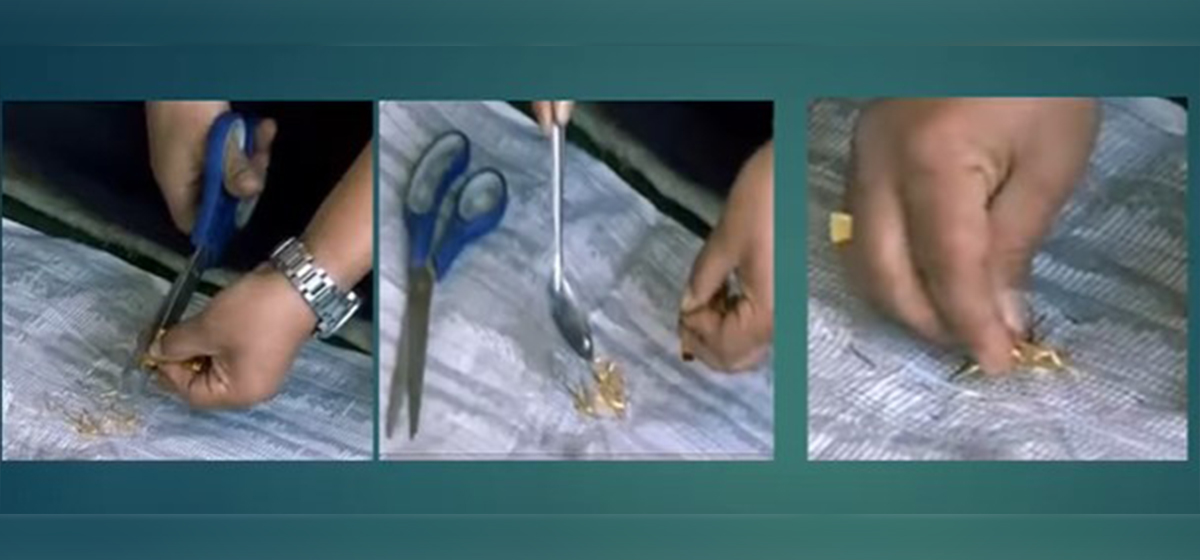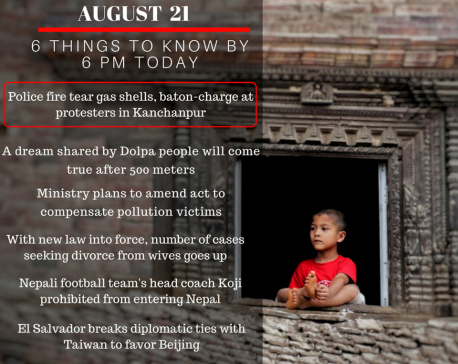
OR
Opinion
Mercury exposure among metal-plating workers in Nepal
Published On: May 11, 2022 08:00 AM NPT By: Ram Charitra Sah


Ram Charitra Sah
Ram Charitra Sah is an environment scientist and executive director of Center for Public Health and Environmental Development (CEPHED), Kathmandu.ramcharitra@gmail.com
Gold-plating has been identified as the largest source of mercury release in Nepal.
Mercury is a naturally occurring element found in air, water and soil. Mercury is considered by WHO as one of the top ten chemicals or groups of chemicals of major public health concern. Exposure to mercury – even small amounts – may cause serious health problems, and is a threat to the development of babies in utero and early in life. Mercury may have toxic effects on the nervous, digestive and immune systems, and on lungs, kidneys, skin and eyes.
Gold plating (gold-mercury amalgam) is one of the most hazardous works primarily practiced by an ethnic community in Nepal and dates back to many centuries. Metal plating is a process in which gold coating/painting is done on the metal statue (sculptures) by mixing mercury and gold together through hand held mortar and piston for an extended hours. The paste/amalgam of gold and mercury thus prepared is applied over the metal statue which is then heated to evaporate mercury so that the gold coating remains on the statue.
In all these processes from making the mercury-gold paste, applying this on the statues and heating them to evaporate the mercury without using any protective gears, workers get direct and very high levels of mercury exposure. The use of high levels of mercury also creates environmental (air, water, soil ) problems.(https://youtu.be/Tk9HZUYQc6s). The workers on the video were not informed at all and were found to be totally unaware about the ill effects of mercury.
The exposure to workers is metallic vapor inhalation and dermal absorption as they directly handle mercury in the workplace, often without necessary Personal Protective Equipment (PPE). The bio monitoring of mercury among 20 metal-plating female workers in the Patan area of Lalitpur revealed very high levels of mercury exposure. The average level of exposure is 3.62 ppm which is higher than the exposure in Africa, the USA and Europe and exposure among workers ranging from 0.35 to 28.46 ppm. As much as 75 percent (15 of 20) workers` samples exceed mercury exposure level over 1 ppm. This finding revealed that populations involved in the gold-plating business in Nepal are at high risk of mercury and need national and global attention for immediate preventive measures and medical assistance.
The Government of Nepal signed the UN Minamata Convention on Mercury on 10th of October 2013. The government has also been preparing for the Ratification of the UN Minamata Mercury Convention. Completed Minamata Initial Assessment (MIA) 2019 reports of Nepal were submitted to the Convention secretariat in early 2019. According to MIA report of Nepal, the total annual release of mercury in Nepal for the base year 2016/17 was estimated to be 19,615 Kg Hg/y, which includes less than 35% (6,790 Kg Hg/y) from different source categories identified in the UNEP Toolkit and over 65% of total (12825 Kg Hg/y) from the gold plating business alone. Gold-plating has been identified as the largest source of mercury release in Nepal.
the total annual release of mercury in Nepal for the base year 2016/17 was estimated to be 19,615 Kg Hg/y, which includes less than 35% (6,790 Kg Hg/y) from different source categories identified in the UNEP Toolkit and over 65% of total (12825 Kg Hg/y) from the gold plating business alone
Another study by the Center for Public Health and Environmental Development (CEPHED) in 2020 on mercury contamination in the wastewater discharge from metal-plating workshops revealed that 100 % (5of 5) waste samples released from the workshops have very high mercury contamination which ranges from 0.627 mg/L to 11478 mg/L which is 62.7 to 1147800 times more than the Government of Nepal Generic Standard of Waste Water effluent for Waterways as well as standard for in land (0.01mg/L) discharge. This untreated wastewater has been discharged on inland surface or small drainage leading to river pollution.
In Nepal, more than 400 families (with avg.10 workers in each family) are involved in this business and thus around 4000 people are directly exposed heavily to mercury during the gold plating process along with the nearby communities. Such populations need urgent attention and their workplace needs immediate improvement to make it safe and free from risks associated with the use of mercury through introduction of sound mercury recovery technology and/or alternative metal plating such as electroplating to minimize or eliminate the adverse effects of mercury. Therefore, there needs to be robust technology innovation to protect the gold plating business which is unique to Nepal and also to protect people, workers and environment.
In Nepal, more than 400 families (with avg.10 workers in each family) are involved in this business and thus around 4000 people are directly exposed heavily to mercury during the gold plating process along with the nearby communities.
The initiative taken by NAST to organize a science dialogue jointly with research-based organization CEPHED and most relevant stakeholder Federation of Handicraft Association of Nepal (FHAN) on these issues is very crucial and urgently needed to fill the long standing gap of technological development to capture mercury that is being released into the environment so as to protect human health and environment on the one hand and protect the unique traditional practices of gold-plating on other hand. It also helps the government to implement the Minamata Convention on Mercury.
You May Like This

Federalism: learning by doing
Issues have emerged regarding effective implementation of federalism. But there is a long way to go and these issues can... Read More...

Aug 21: 6 things to know by 6 PM
Your daily dose of missed important news of the day. ... Read More...

What Nepal needs is India's friendship and support for growth: Nepal PM Oli
In an exclusive interview to The Hindu, Mr. Oli says the bitterness of past relations have been put behind them,... Read More...






Just In
- CM Kandel requests Finance Minister Pun to put Karnali province in priority in upcoming budget
- Australia reduces TR visa age limit and duration as it implements stricter regulations for foreign students
- Govt aims to surpass Rs 10 trillion GDP mark in next five years
- Govt appoints 77 Liaison Officers for mountain climbing management for spring season
- EC decides to permit public vehicles to operate freely on day of by-election
- Fugitive arrested after 26 years
- Indian Potash Ltd secures contract to bring 30,000 tons of urea within 107 days
- CAN adds four players to squad for T20 series against West Indies 'A'












Leave A Comment